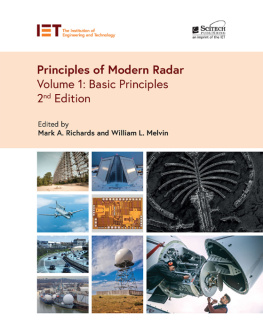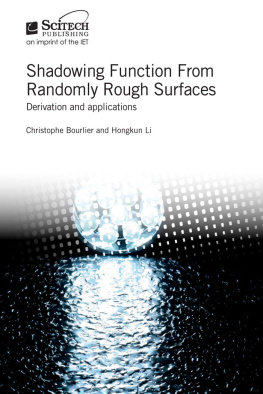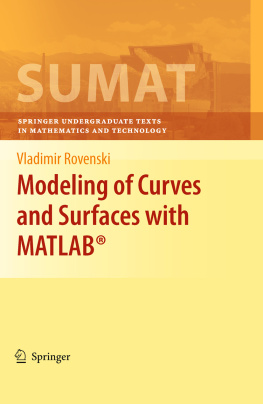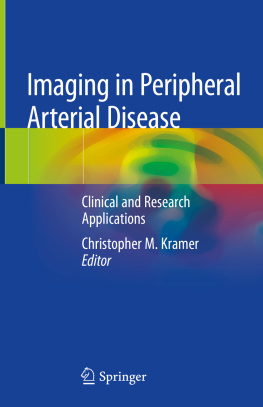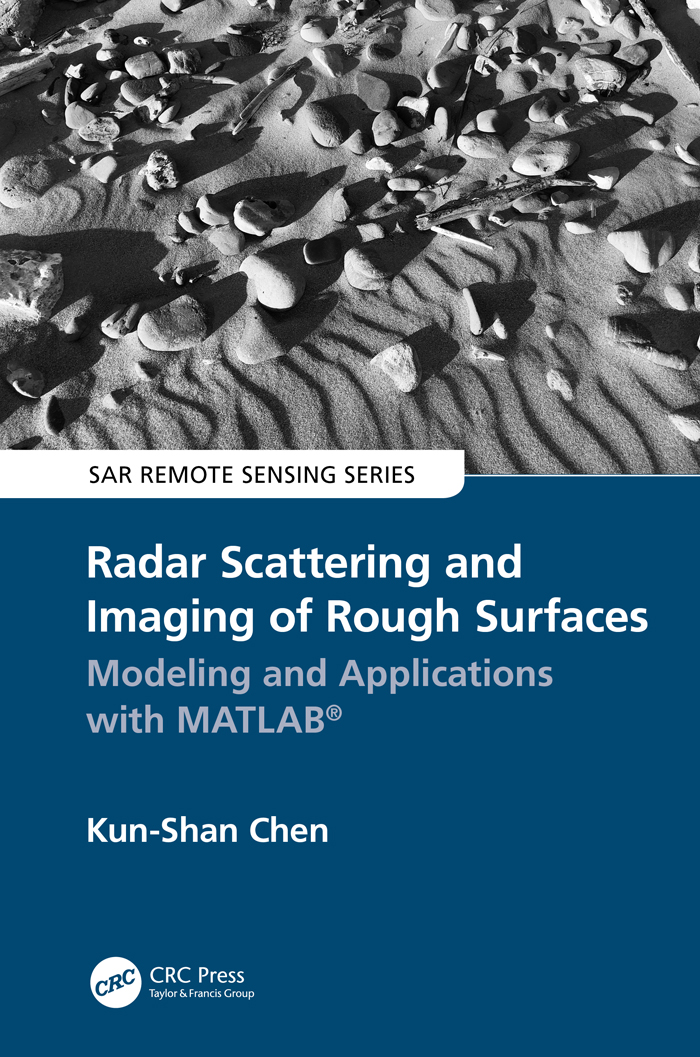Contents
Contents
RADAR SCATTERING AND
IMAGING OF ROUGH SURFACES
Modeling and Applications with
MATLAB
Kun-Shan Chen

SAR Remote Sensing
A SERIES
Series Editor
Jong-Sen Lee
Polarimetric SAR Imaging
Theory and Applications
Yoshio Yamaguchi
Imaging from Spaceborne and Airborne SARs,
Calibration and Applications
Masanobu Shimada
For more information about this series, please visit: https://www.routledge.com/SAR-Remote-Sensing/book-series/CRCSRS
MATLAB is a trademark of The MathWorks, Inc. and is used with permission. The MathWorks does not warrant the accuracy of the text or exercises in this book. This books use or discussion of MATLAB software or related products does not constitute endorsement or sponsorship by The MathWorks of a particular pedagogical approach or particular use of the MATLAB software.
First edition published 2021
by CRC Press
6000 Broken Sound Parkway NW, Suite 300, Boca Raton, FL 33487-2742
and by CRC Press
2 Park Square, Milton Park, Abingdon, Oxon, OX14 4RN
2021 Taylor & Francis Group, LLC
CRC Press is an imprint of Taylor & Francis Group, LLC
Reasonable efforts have been made to publish reliable data and information, but the author and publisher cannot assume responsibility for the validity of all materials or the consequences of their use. The authors and publishers have attempted to trace the copyright holders of all material reproduced in this publication and apologize to copyright holders if permission to publish in this form has not been obtained. If any copyright material has not been acknowledged please write and let us know so we may rectify in any future reprint.
Except as permitted under U.S. Copyright Law, no part of this book may be reprinted, reproduced, transmitted, or utilized in any form by any electronic, mechanical, or other means, now known or hereafter invented, including photocopying, microfilming, and recording, or in any information storage or retrieval system, without written permission from the publishers.
For permission to photocopy or use material electronically from this work, access
Trademark notice: Product or corporate names may be trademarks or registered trademarks, and are used only for identification and explanation without intent to infringe.
ISBN: 978-1-138-54126-9 (hbk)
ISBN: 978-1-351-01157-0 (ebk)
by MPS Limited, Dehradun
Visit the Support Materials: https://www.routledge.com/9781138541269.
In loving memory of my mother
This book is dedicated to
Professor Adrian K. Fung for his mentorship
my students for their patience and inspiring feedback
my beloved wife, Jolan, for her lifetime of support and encouragement
my beloved childrenAnnette, Vincent, and Lorenzfor
bringing me joy
The rough surface is everywhere in our physical world. The radar scattering from a rough surface is a difficult boundary value problem. However, it is of particular interest to the remote sensing society since all the natural surfaces are rough in the full spectrum of electromagnetic waves. Due to the complexity of the problem, mathematically tractable solutions or computationally manageable solutions are still in high demand. Research on wave scattering from random media has a very long history, back to the early 1960s. Great advances have been observed in the past 30 years since then.
This book attempts to systematically give the physical mechanisms and numerical computation aspects on radar scattering and imaging of the rough surface. Understanding of electromagnetic wave scattering from a dielectric rough surface is of interest and is vital in lines of geophysical parameters retrieval from microwave scattering and emission measurements, surface finish, roughness-caused phased error of a reflective surface, etc. Radar imaging of such rough surfaces is also found in many application domains. This book covers both subjects and their physical connection and offers useful models for improving understanding and for practical applications. Electromagnetic waves scattering from a randomly rough surface is of palpable importance in many disciplines and bears itself in various applications, spanning from surface treatment to remote sensing of terrain and ocean. For example, in microwave remote sensing of terrain, it has been a common practice to retrieve, by analyzing the sensitivity of the scattering behavior and mechanisms, the geophysical parameters of interest from the scattering and/or emission measurements. Another example is that by knowing the backscattering patterns, one may be able to detect the presence of the undesired random roughness of a reflective surface such as an antenna reflector, and thus accordingly devise a means to correct or to compensate the phase errors with respect to the phase center. Therefore, it has been both theoretically and practically motivated to study the electromagnetic wave scattering from the random surfaces. To tackle the complex and yet intricate mathematical derivations, while to retain a high level of accuracy, models beyond conventional have been developed under certain physical-justified assumptions. Among the assumptions, one was to use a simplified Greens function by dropping off the phase term associated with the random surface height. Doing so might be more profoundly critical among all assumptions but greatly alleviating the burden of mathematical derivations, and yet unavoidably degrading the model accuracy, to certain extents, depending on the surface property and observation geometry.
This book differs in that it does not cover these topics from pure electromagnetic wave theory in the framework of Maxwells equations, but treats the subjects from an application-oriented manner while still maintaining minimum theoretical foundations. In line with these points, the statistical description of the randomly rough surface is introduced. The uncertainties of the surface parameters that are inputs to the scattering model are addressed to facilitate the tracking of model predictions. In terms of parameter retrieval from radar measurements, global sensitivity analysis is regarded as a premier issue to warrant a rich information content of which the radar scattering signal contains in particular configurations. Following the sensitivity analysis is the approach to estimating the surface parameters by least-square fitting and a neural network. Examples of inversion from various radar satellites are provided.
The second part of the book, closely related to the scattering theory, covers the radar imagingin the context of image formation of the scattering process. The coverage is motivated by the fact that in recent years there has been an explosive growth of interest in radar imaging of random media, from remote sensing of terrain to medical imaging. The advance of theoretical research in stochastic electromagnetic fields and modern processing techniques has been progressively made at a swift pace like never before.
The electromagnetic wave-media interactions and the image formation are naturally connected, so that some critical issues regarding image sensitivity and information content, uniqueness, accuracy, and resolution can be properly addressed. The subject covers a broad treatment of subjects closely related to the imaging of random surface and media through theory modeling, numerical simulation, and laboratory measurements. Computer codes in MATLAB for selected model algorithms, accompanied by users applications, are available as Support Materials at the CRC website: https://www.routledge.com/9781138541269.


